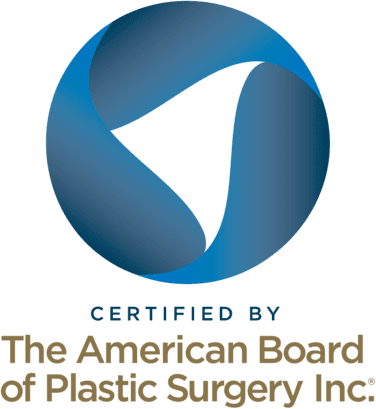Chest Reconstruction Top Surgery Buttonhole Procedure
The buttonhole insicion is a technique for top surgery patients who do not have great ammounts of mammary tissue to remove and whose greatest priority is maintaining heightened nipple sensation. It is identical to the inverted-T procedure in many ways, as the nipple and areola do not need to be placed as a free nipple graft. In this case less skin needs to be removed than with the inverted-T procedure, the buttonhole approach does not require a vertical incision.
Buttonhole is a good choice for patients with less chest tissue who require less skin excision, but in our practice the main difference is whether a breast-shaped form or a mound form is the final result. Like the inverted-T, there is the possibility of retaining nipple sensation. In our practice, the buttonhole procedure type is chosen if patients wish to have a more mound-like (not breast shaped) shape to each side of the chest, while the inverted T procedure is used for patients who wish to still have a breast-shaped form (albeit much smaller) to the chest areas.
The Buttonhole Procedure Explained
As with inverted-T, a thin “pedicle” is kept which maintains the sensation and blood supply to the nipple area. Use of the pedicle means that it is possible (but not a guarantee) sensation may be maintained. It can take several weeks to months after surgery to tell whether you will still have nipple sensation, and what kind of sensation you have kept.
Pros and Cons of the Buttonhole Procedure
Like the inverted-T procedure, buttonhole has the potential upside of a greater chance of keeping nipple sensation. But, also like inverted-T, possible downsides include more tissue remaining in the chest, and the surgeon may not have the full control over the positioning of the nipple, as they would with the double incision procedure. The amount of fullness left over is variable – based on how much chest tissue there was before surgery, and also based on the firmness of the chest tissue.
Finally, the surgeon still has the same challenge as with inverted-T, in which they may not be able to customize the location of the incision quite as well as they could with a double incision procedure.
How to Decide Between the Different Techniques
If you do not want free nipple grafts, or you hope to take a chance at maintaining nipple sensation, buttonhole or inverted-T are good procedures to consider.
However, if your priority is a chest that is as flat as possible and if you want to have the best position of the areolas on the chest, double incision has the most flexibility in terms of goals regarding appearance. And if your long-term priority is to work out and to have as muscular of a chest as possible, this procedure is not for you because the leftover tissue could hide the chest muscles. Ultimately, the best approach is to consult with a surgeon who can help guide you toward the procedure that is the best fit for your body and your goals.
Request a Free Surgical Consultation Today.
All virtual and in-person consultations with our board-certified surgeons are free. Once you fill out this form, our patient care team will reach out and guide you through every step to get to surgery.





